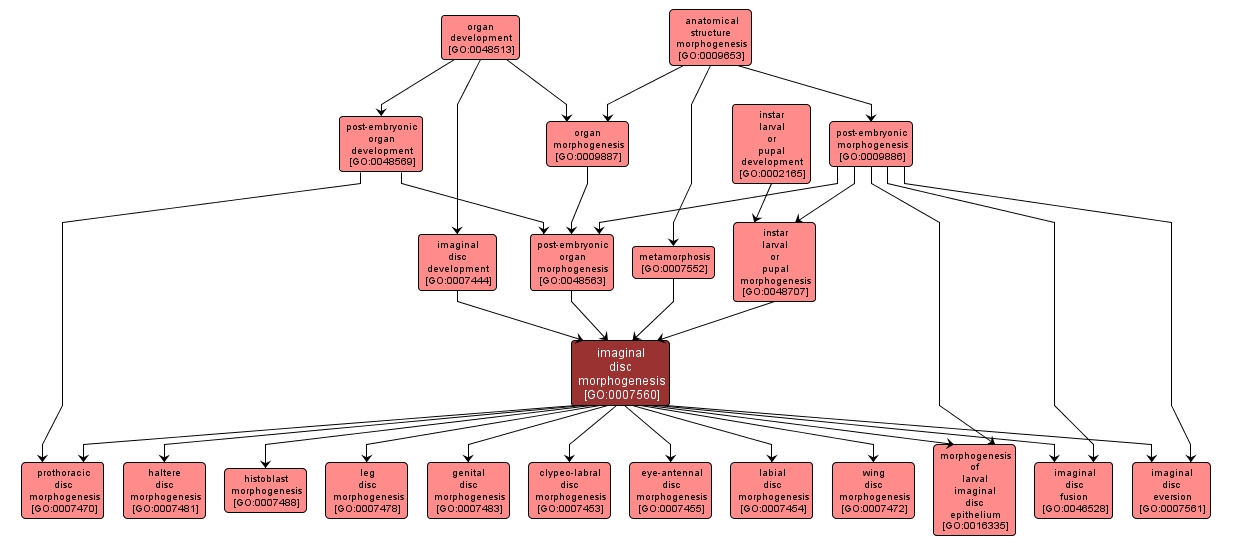| Desc: |
The process by which the anatomical structures derived from an imaginal disc are generated and organized. Morphogenesis pertains to the creation of form. The imaginal discs are epithelial infoldings in the larvae of holometabolous insects that develop into adult appendages (legs, antennae, wings, etc.) during metamorphosis from larval to adult form. |














